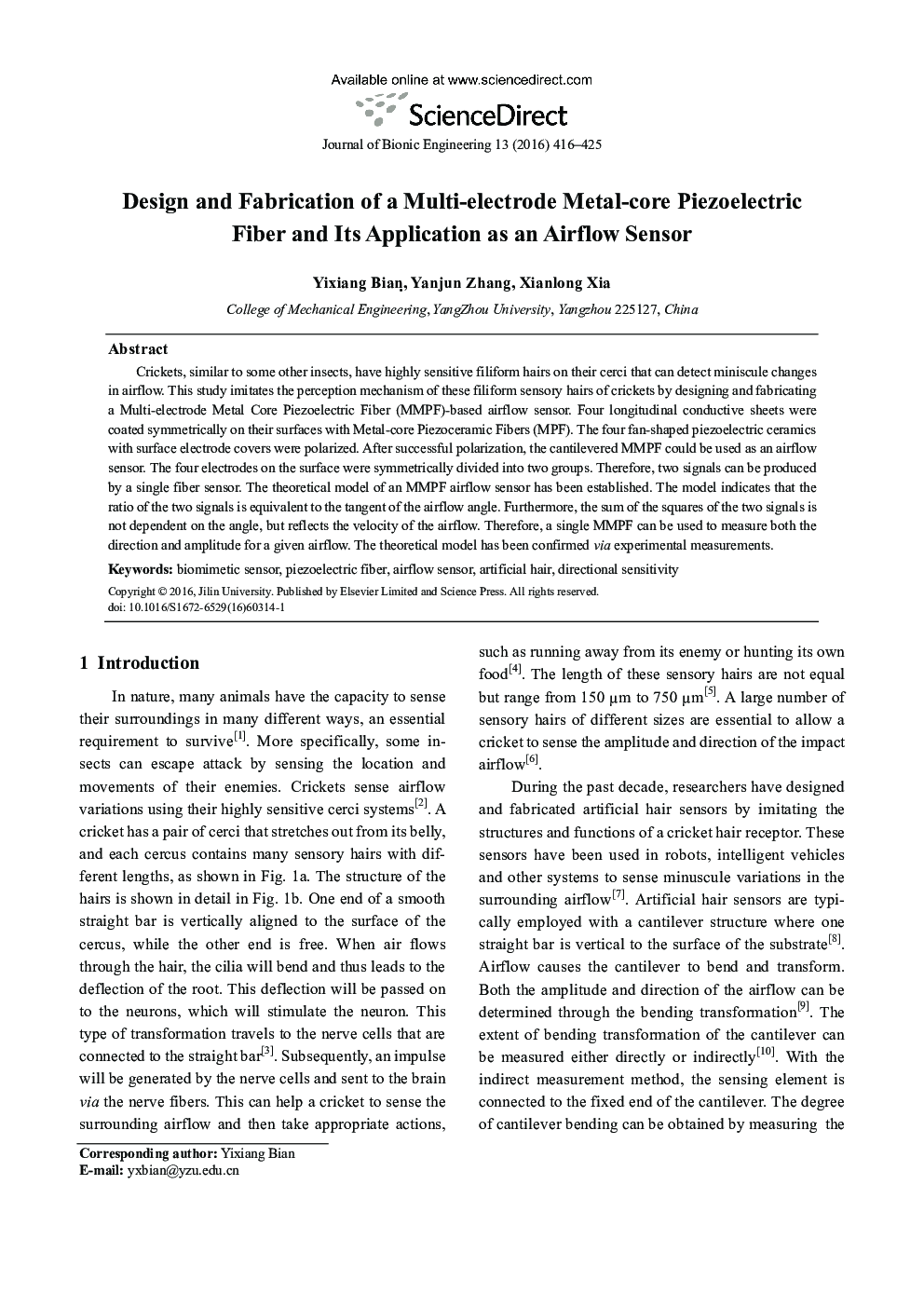| Article ID | Journal | Published Year | Pages | File Type |
|---|---|---|---|---|
| 826524 | Journal of Bionic Engineering | 2016 | 10 Pages |
Crickets, similar to some other insects, have highly sensitive filiform hairs on their cerci that can detect miniscule changes in airflow. This study imitates the perception mechanism of these filiform sensory hairs of crickets by designing and fabricating a Multi-electrode Metal Core Piezoelectric Fiber (MMPF)-based airflow sensor. Four longitudinal conductive sheets were coated symmetrically on their surfaces with Metal-core Piezoceramic Fibers (MPF). The four fan-shaped piezoelectric ceramics with surface electrode covers were polarized. After successful polarization, the cantilevered MMPF could be used as an airflow sensor. The four electrodes on the surface were symmetrically divided into two groups. Therefore, two signals can be produced by a single fiber sensor. The theoretical model of an MMPF airflow sensor has been established. The model indicates that the ratio of the two signals is equivalent to the tangent of the airflow angle. Furthermore, the sum of the squares of the two signals is not dependent on the angle, but reflects the velocity of the airflow. Therefore, a single MMPF can be used to measure both the direction and amplitude for a given airflow. The theoretical model has been confirmed via experimental measurements.
